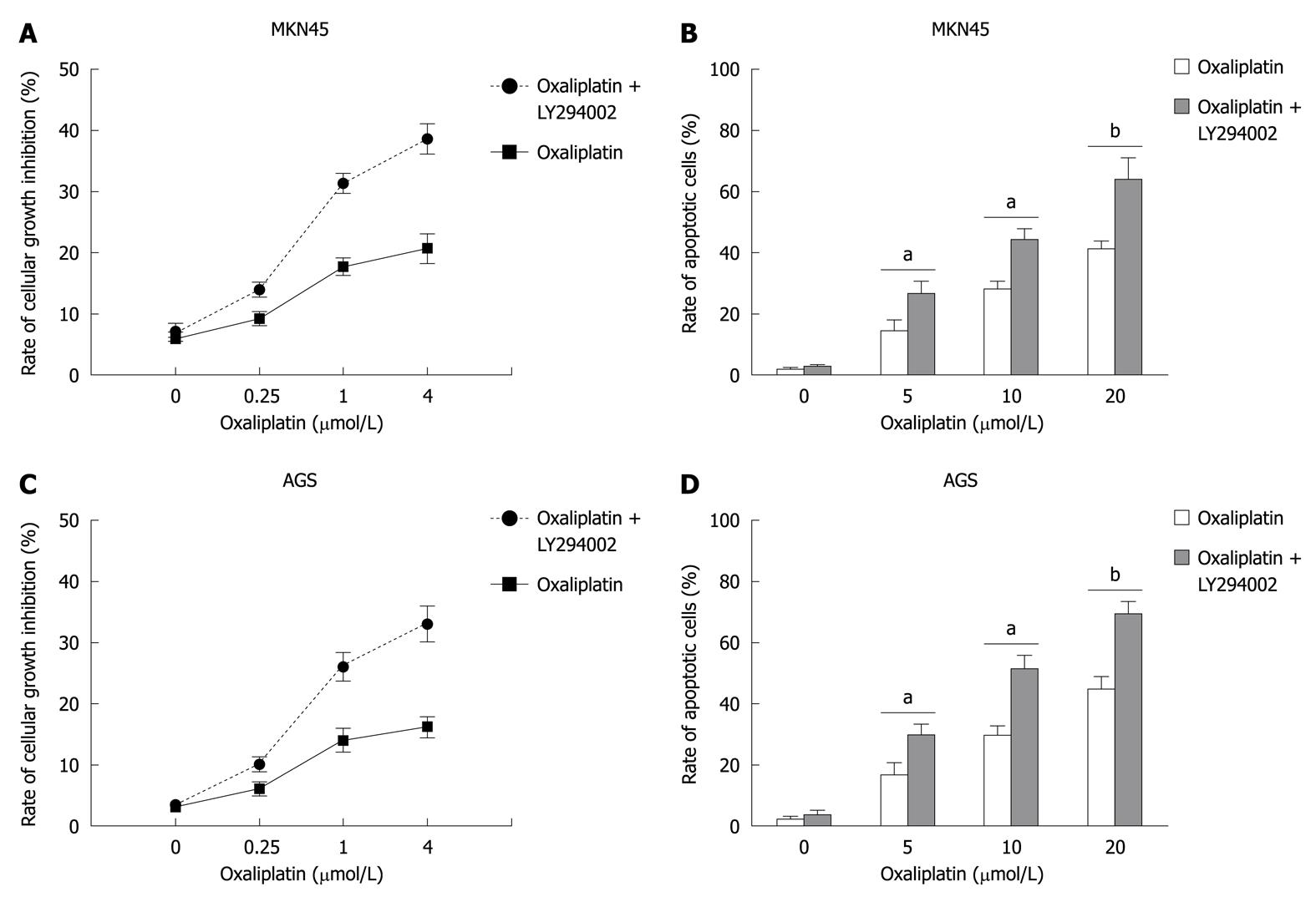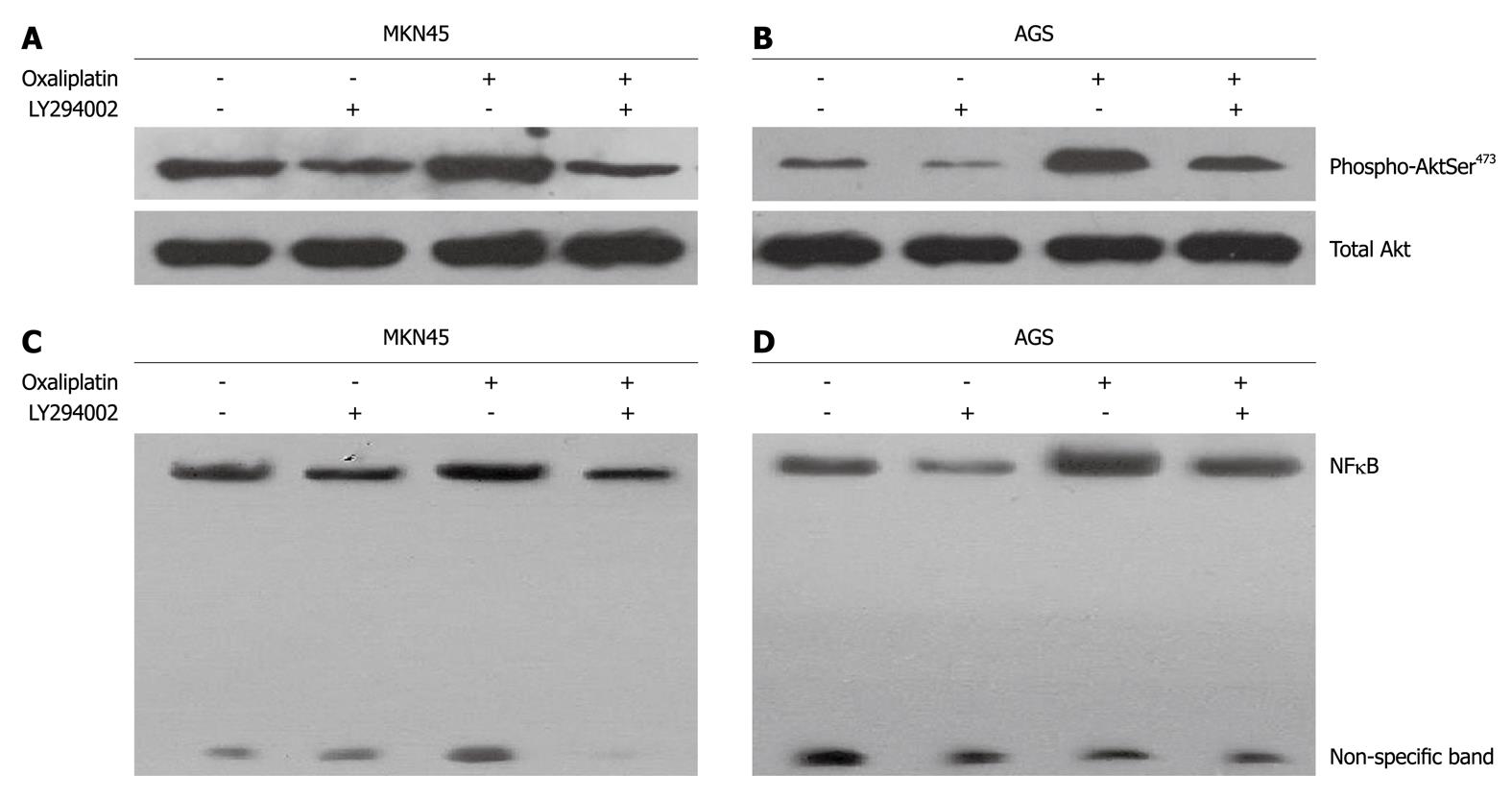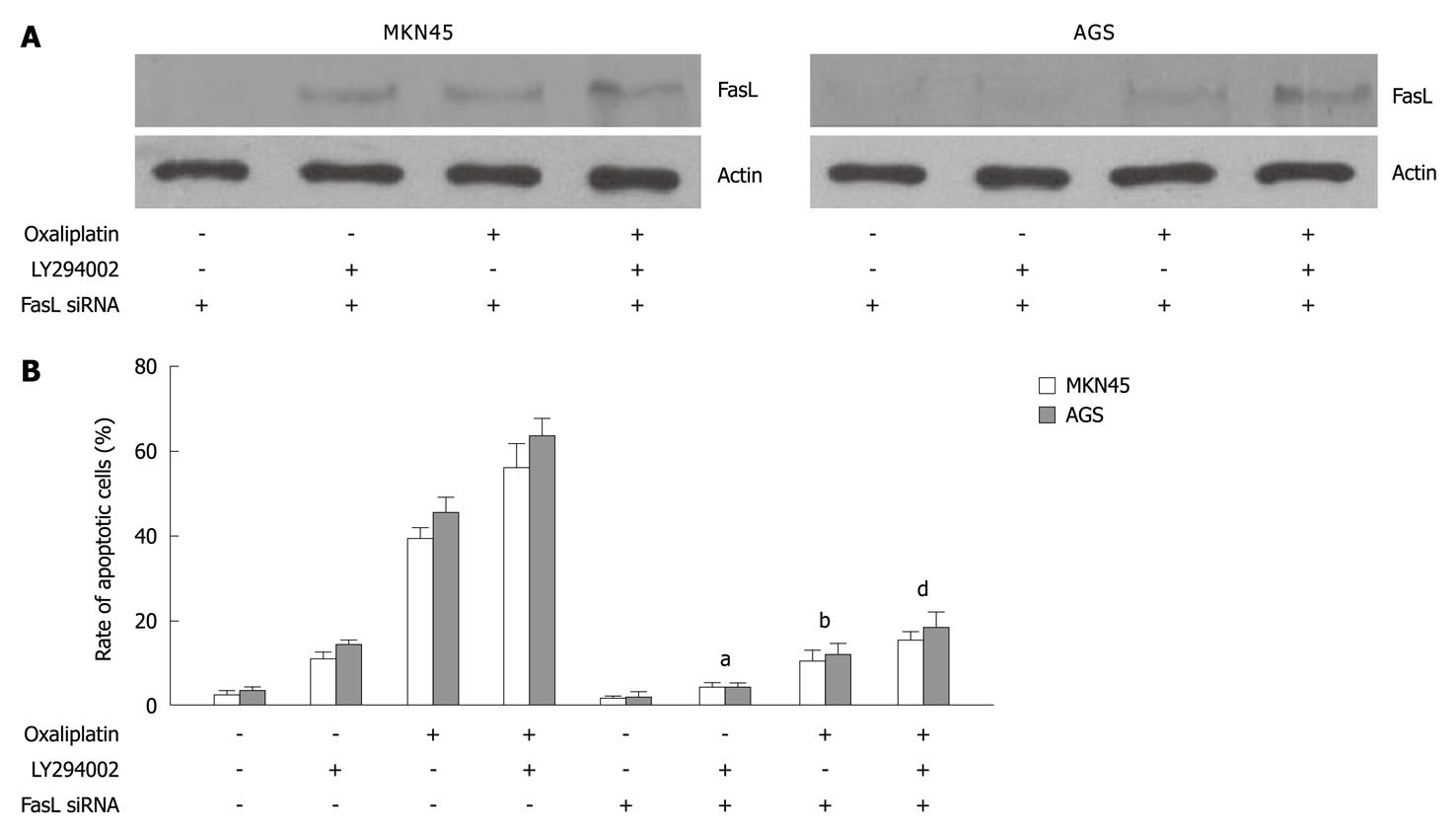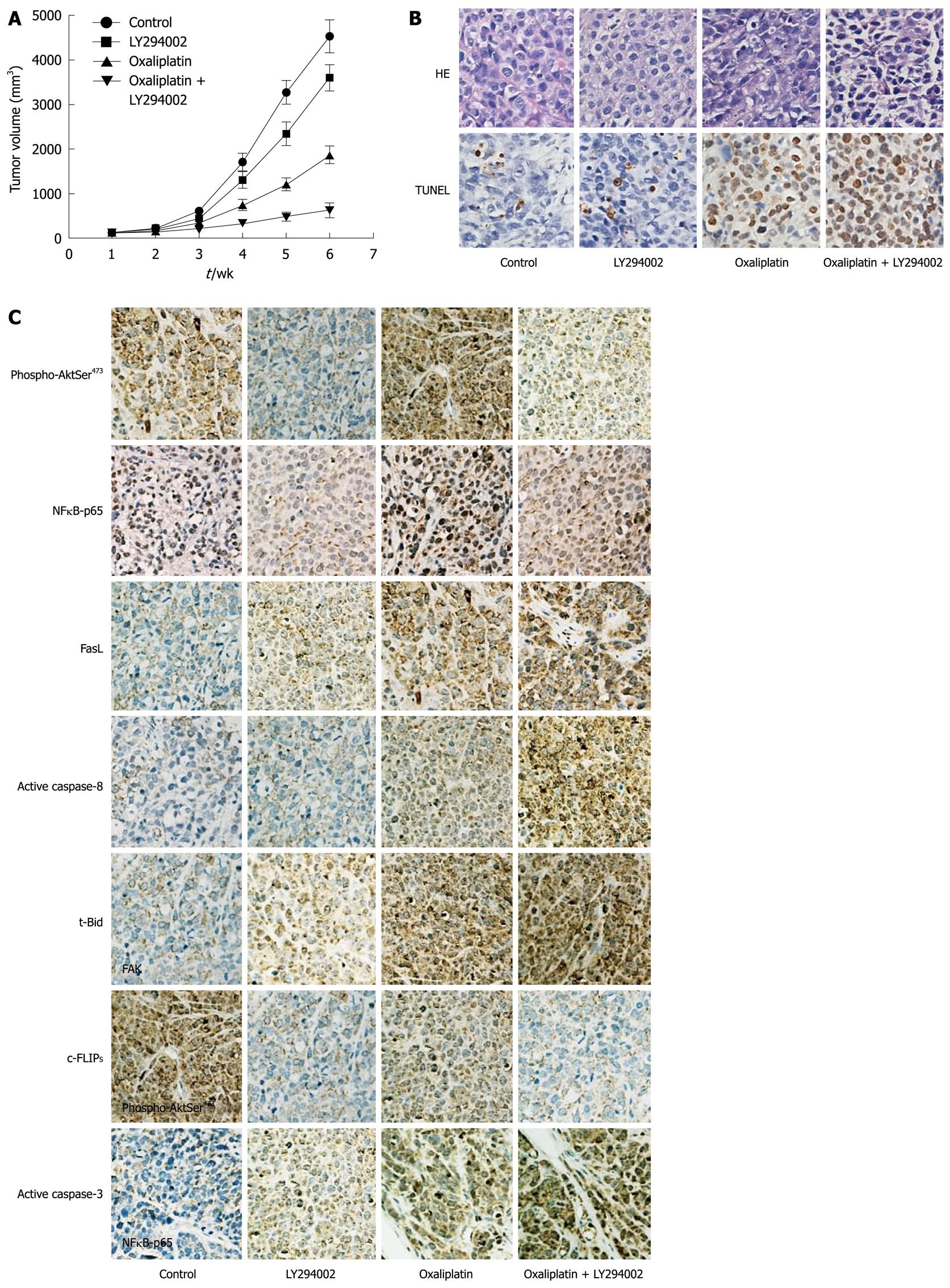Copyright
©2011 Baishideng Publishing Group Co.
World J Gastroenterol. Jan 14, 2011; 17(2): 181-190
Published online Jan 14, 2011. doi: 10.3748/wjg.v17.i2.181
Published online Jan 14, 2011. doi: 10.3748/wjg.v17.i2.181
Figure 1 LY294002 increased oxaliplatin-induced cell proliferation and apoptosis in gastric cancer cells.
MKN45 and AGS cells were treated with various doses of oxaliplatin (0-20 μmol/L) for 24 h with or without LY294002 pretreatment (25 μmol/L). A, C: Cell growth inhibitory rates were evaluated by 3-(4,5-dimethylthiazol-2-yl)-2,5-diphenyltetrazolium bromide assay; B, D: Apoptosis of cells was investigated by flow cytometry. LY294002 significantly increased oxaliplatin-induced growth inhibition and apoptosis. aP < 0.05, bP < 0.01 vs oxaliplatin alone.
Figure 2 LY294002 inhibited basal and oxaliplatin-induced phosphorylation of Akt and nuclear factor κB/DNA binding activities.
MKN45 and AGS cells were incubated with oxaliplatin (20 μmol/L) or LY294002 (25 μmol/L) used singly or in combination for 24 h. A, B: Oxaliplatin enhanced the phosphorylation of Akt (Ser473, but not Thr308), while LY294002 inhibited the induction of Akt activity in MKN45 and AGS cells; C, D: Oxaliplatin increased nuclear factor κB (NFκB)/DNA binding activity, while LY294002 inhibited the induction of NFκB/DNA binding activity.
Figure 3 Effects of oxaliplatin, LY294002, or combination on recruitment of Fas-associated death domain protein, expression of Fas ligand and short form of cellular caspase-8/FLICE-inhibitory protein, and activation of caspase-8, Bid, and caspase-3.
A-D: In MKN45 and AGS cells, oxaliplatin led to increased Fas ligand (FasL) expression, Fas-associated death domain protein (FADD) recruitment, caspase-8 and caspase-3 activation, and Bid cleavage (t-Bid formation). LY294002 significantly promoted these oxaliplatin-induced changes. Oxaliplatin reduced short form of cellular caspase-8/FLICE-inhibitory protein (c-FLIPS) expression, while LY294002 enhanced this effect of oxaliplatin. Oxaliplatin and LY294002 did not modulate long form of cellular caspase-8/FLICE-inhibitory protein expression (data not shown). IP: Immunoprecipitation; WB: Western blotting.
Figure 4 Fas ligand siRNA attenuated oxaliplatin-, LY294002-, or combination-induced cell apoptosis.
A: Fas ligand (FasL) expression was inhibited by FasL siRNA in MKN45 and AGS cells; B: FasL silencing decreased oxaliplatin-, LY294002-, or combination-induced cell apoptosis. aP < 0.05 vs LY294002 treatment; bP < 0.01 vs oxaliplatin treatment; dP < 0.01 vs combination of oxaliplatin and LY294002.
Figure 5 Effects of oxaliplatin, LY294002, or combination on in vivo tumor growth and apoptosis.
A: Tumor volumes of nude mice in each group are presented. Each time point represents the mean tumor volume for each group; B: Detection of apoptotic cells in tumor tissue was performed by transferase-mediated dUTP nick end labeling (TUNEL) assay; C: The expression of phospho-AktSer473, nuclear factor κB (NFκB)-p65, Fas ligand (FasL), short form of cellular caspase-8/FLICE-inhibitory protein (c-FLIPS), Bid, caspase-8, and caspase-3 was investigated by immunohistochemical analysis.
-
Citation: Liu J, Fu XQ, Zhou W, Yu HG, Yu JP, Luo HS. LY294002 potentiates the anti-cancer effect of oxaliplatin for gastric cancer
via death receptor pathway. World J Gastroenterol 2011; 17(2): 181-190 - URL: https://www.wjgnet.com/1007-9327/full/v17/i2/181.htm
- DOI: https://dx.doi.org/10.3748/wjg.v17.i2.181













